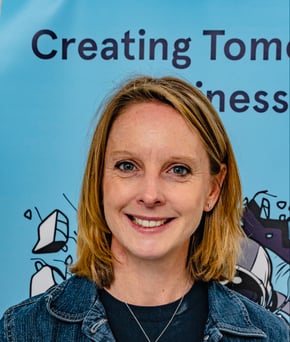In the world of product, many organisations operate like a relay team, passing the baton from one function to the next: from the business, to research, to design, to product, and finally to engineering. While this approach may seem logical on the surface, it often leads to misaligned goals, inefficiencies, and, worst of all, delivering solutions that miss the mark for customers.
Let’s have a look at why this happens and how a shift in mindset and organising teams around end-to-end value can be transformative.
The Problem with Relays
Imagine a relay race at the Olympics. Well you don't have to imagine, this one is a true story! The US 4x100m team, despite their individual talents, was disqualified because the second-leg runner started too early. This real-life scenario mirrors what happens when product teams operate in silos.
When organisations treat product development as a series of handoffs, several problems arise:
- Distance from the Customer: The team solving the problem is often far removed from the actual users.
- Siloed Functions: Each function works independently, slowing down decision-making and creating gaps in accountability.
- Misaligned Goals: Business units focus on strategy, while IT teams are tasked with delivery, leaving no one accountable for end-to-end outcomes.
What’s the Solution?
There’s no magic wand, but there are principles and frameworks that can help you move from this fractured model to one that encourages collaboration and customer-centricity. The key lies in organising around value.
-
Understand Your Customer's Journey
Start by mapping the customer journey, what problems are they trying to solve, and how do they interact with your product? For example, in the energy industry, you might have distinct customer journeys like “Join” (choosing and purchasing), “Stay” (managing and renewing), and “Assist” (getting help). -
Visualise the End-to-End Flow of Value
Break down the journey into frontstage (customer interactions) and backstage (processes, systems, and teams) components. This clarity helps identify where to draw boundaries and organise teams. -
Align Teams to Value Streams
Form cross-functional teams around these value streams. For instance, an energy provider might have teams focused on “Join” (onboarding new customers), supported by platform teams that manage backend systems like the CRM or billing. -
Enable Autonomy and Accountability
These teams should own measurable outcomes, such as reducing onboarding drop-off rates or increasing customer satisfaction. Platform teams, in turn, reduce cognitive load by providing reusable services, allowing value stream teams to focus on customer impact.
Real-World Insights
When I switched my gas to a new provider for lower costs and Velocity Points (nice), the process was seamless, from a digital application to confirmation of my gas being switched. Their secret? Teams aligned to the customer journey, with platform teams supporting the backend transitions.
Similarly, in insurance, platform teams specialising in policy administration systems support the entire value chain, from quotes to claims, ensuring compliance and efficiency.
Building the Right Teams
It’s not one-size-fits-all. While the classic trio of product, engineering, and design works in many scenarios, some contexts require additional expertise, such as data analysts or delivery managers. The goal is to tailor team composition to the specific challenges they face.
The Outcome: Faster, Better Value Delivery
When organizations move from handoffs to collaboration, the benefits are clear:
- Faster Time to Value: Less time spent on dependencies and alignment.
- Closer Connection to Customers: Teams that understand and address real needs.
- Reduced Waste: Eliminating unnecessary rework and miscommunication.
Much like the Mighty Ducks, a scrappy team of misfits that learned to work together in a V-formation, product teams can achieve more when they move as one, sharing accountability and adapting as they go.
By organising around value and fostering cross-functional collaboration, you not only streamline your operations but also create a structure that consistently delivers meaningful outcomes for your customers. So, the next time you find yourself passing the baton, ask: What would the Mighty Ducks do?

